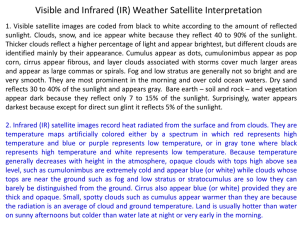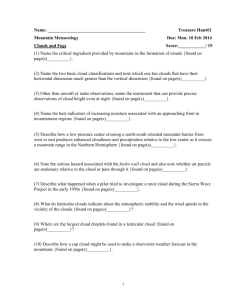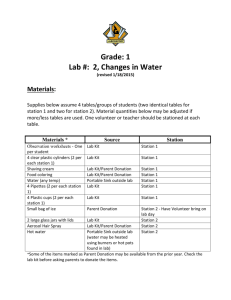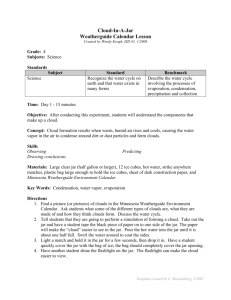The Cloud Book (2)
advertisement
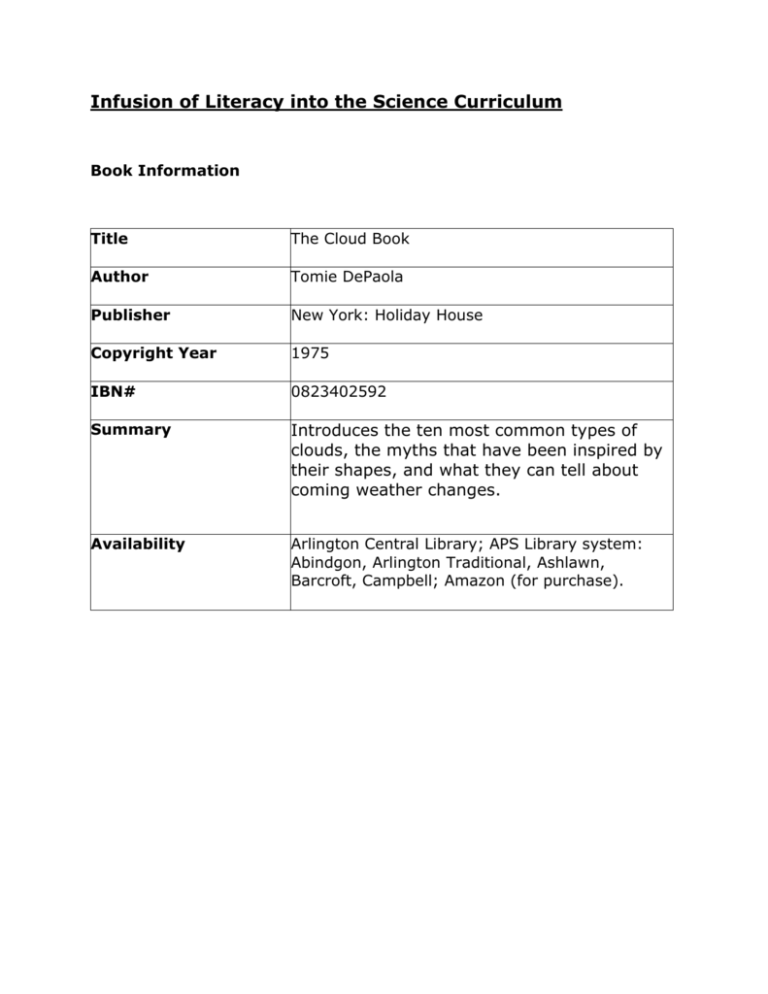
Infusion of Literacy into the Science Curriculum Book Information Title The Cloud Book Author Tomie DePaola Publisher New York: Holiday House Copyright Year 1975 IBN# 0823402592 Summary Introduces the ten most common types of clouds, the myths that have been inspired by their shapes, and what they can tell about coming weather changes. Availability Arlington Central Library; APS Library system: Abindgon, Arlington Traditional, Ashlawn, Barcroft, Campbell; Amazon (for purchase). How can the book content be infused into the science curriculum? Grade Level K-5 Strands Scientific Investigation, Reasoning and Logic; Interrelationships in Earth/Space Systems Kindergarten Scientific Investigation, Reasoning and Logic K.1; K.2- Five senses, descriptions and sequencing Interrelations in Earth/Space Systems K.8 Shadows Grade 1 Scientific Investigation, Reasoning and Logic 1.1- Classifying, measuring, predicting Interrelations in Earth/Space Systems 1.6 Night and day, effects of sun Grade 2 Scientific Investigation, Reasoning and Logic 2.1- Measurement, classification, graphs, unexpected data Interrelations in Earth/Space Systems 2.6 Weather Grade 3 Scientific Investigation, Reasoning and Logic 3.1- Making predications and observations, data charted, drawing conclusion Grade 4 Scientific Investigation, Reasoning and Logic 4.1- Hypotheses, predictions, measurement Interrelations in Earth/Space Systems 4.6 Weather-measurements, predicitons Grade 5 Scientific Investigation, Reasoning and Logic 5.1- Classification key, measurement, graphing data, variables Sample Activities Grade K-2 Make a cloud in the classroom. 1.Use a one gallon clear glass bottle and a cloth that is large enough to cover the opening of the bottle that will be secured with a rubber band. Pour hot water into the clear glass jar. Let it sit a minute until the water heats the jar, then pour out all but one inch of water. Stretch some cloth over the opening and secure it with a rubber band. Place a plastic bag filled with ice on top. Observe and record what happens. As the children watch, water vapor will form inside the jar. 2. Observe and collect weather data daily. Include the types of clouds, temperature, precipitation, wind and any other appropriate data. 3. Set up a water cycle. In a clear glass container, put a small amount of water with food coloring. Cover with plastic wrap and secure with a rubber band. Set the container in sunlight. Observe and discuss what happens over time. 4. Collect rainfall for a month. Make your own rain gauge with a tall jar. Measure the amount of rain collected after each rainfall. Record the data and use it to make a graph. Compare the rainfall for a period of time. 5. Write a story about the adventures of a raindrop traveling through each stage of the water cycle. What would you do, how would you feel? Grade 3-5 Go over the types of clouds that the The Cloud Book talks about. Show pictures of the five basic types of clouds that you want them to learn about. Have students take various pictures of clouds using a digital camera. Then, have them create a digital photo cloud book identifying each type of cloud and giving some details of each. Make a CloudGive each group of 3-4 students a 9 X 13 or larger cake pan, water tinted with blue food coloring, shaving cream and one straw for each child. 1. Fill each pan with one inch of blue water. 2. Squirt a "cloud" of shaving cream onto the water. 3. Invite the children to pretend that you have just given each group a puffy, white cloud of their very own. 4. Ask, "How could you move your cloud without touching the pan or the cloud?" 5. As each group discovers that they can blow on the "cloud" to move it, provide straws to extend their exploration. Do the shaving cream clouds move faster or farther when you blow harder? 6. Challenge students to think of other ways to move the air to create wind. Provide old file folders, scrap paper, and paper plates. Encourage students to make different fans and discuss and interpret the results.


